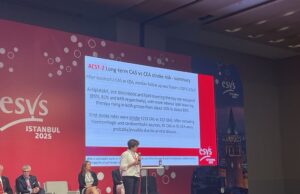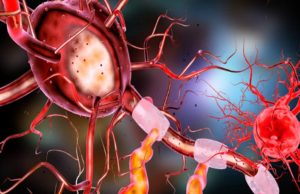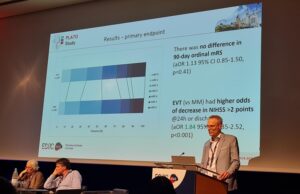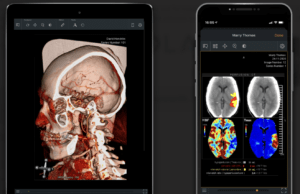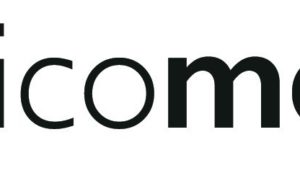Tag: stroke
InspireMD names Peter Soukas as chief medical officer
InspireMD, developer of the CGuard Prime carotid stent system for the prevention of stroke, today announced the appointment of Peter Soukas (The Miriam Hospital...
ACST-2: Both CAS and CEA provide “similarly durable protection” against stroke...
Sharing 10-year findings from the ACST-2 trial at the 39th European Society for Vascular Surgery (ESVS) annual meeting (23–26 September, Istanbul, Türkiye), Alison Halliday...
Stroke advocates call for urgent action at European parliament event
Last week, stroke took centre stage at a European parliament event in Brussels, Belgium, where policymakers, people with lived experience, healthcare professionals, researchers, support...
Sentante stroke system receives US FDA Breakthrough Device designation
Sentante recently shared that the US Food and Drug Administration (FDA) has granted Breakthrough Device designation for the company's robotic stroke system.
A press release...
Researchers develop 3D-bioprinted vascular stenosis models to help improve cerebrovascular disease...
A research team in South Korea has developed a 3D-bioprinted, in-vitro model of stenotic brain blood vessels in an effort to offer new insights into endothelial...
Not all carotid procedures are equal after patients suffer a postoperative...
A multicentre, retrospective, comparative analysis of Vascular Quality Initiative (VQI) data recently looked at stroke-related disability and mortality after three modes of carotid revascularisation,...
Revalesio announces publication of results from Phase 2 RESCUE trial
Revalesio has announced the peer-reviewed publication of results from its Phase 2 RESCUE clinical trial evaluating RNS60 as an adjunctive treatment in patients with...
Diabetes drugs like Ozempic may help mitigate effects of stroke and...
GLP-1 inhibitors like semaglutide (Ozempic)—commonly prescribed diabetes medications that lower blood sugar levels and often cause weight loss—may be able to mitigate against strokes...
EAN 2025: heart rate variability during sleep may reveal early signs...
New research presented at the 2025 European Academy of Neurology (EAN) congress (21–24 June, Helsinki, Finland) has uncovered a notable link between nighttime heart...
Electronic consent demonstrates potential to overcome “key barrier” in stroke trial...
Post-hoc analyses of a large, randomised clinical trial have revealed the potential advantages associated with electronic informed consent (eConsent) in acute ischaemic stroke studies,...
Stroke survivors achieve long-term improvement in motor function with VNS therapy
Microtransponder has announced the publication of new findings in the journal Stroke validating the beneficial long-term outcomes of paired vagus nerve stimulation (VNS) therapy...
Imperative Care launches dual aspiration thrombectomy catheter for ischaemic stroke treatment
Imperative Care has announced that the Zoom stroke system has been further expanded with the launch of the Zoom DuoPort technology, which allows physicians...
“We can’t afford to wait”—new coalition calls for urgent action to...
The “world’s first” multisector advocacy movement dedicated to stroke—the Global Stroke Action Coalition—is launching today, and has issued an urgent call to action to...
Fluid dynamics modelling elucidates role of blood flow impairment in symptomatic...
Via computational fluid dynamics models, a recent study has offered insights into the relevance of balancing two key mechanisms of haemodynamic deterioration—plaque burden and...
AHA advisory: Recent clinical data “reframe” role of EVT in large-core...
A new scientific advisory from the American Heart Association (AHA)—published recently in the journal Stroke—has reviewed clinical data from six randomised controlled trials evaluating...
Endovascular brain procedures: The next frontier for vascular surgery?
Laura Capoccia (Frosinone, Italy) writes about vascular surgeons’ role in acute stroke management and the importance of collaboration with other specialties in this setting.
While...
Large database study finds no difference in outcomes between three carotid...
A new Vascular Quality Initiative (VQI) data analysis, recently published in the European Journal of Vascular and Endovascular Surgery (EJVES), has found no statistically...
SVIN introduces Mechanical Thrombectomy Access Score via “groundbreaking” research paper
The Society of Vascular and Interventional Neurology (SVIN) recently announced the publication of a “significant” research paper in the journal Stroke, presenting the Mechanical Thrombectomy Access...
Branch atheromatous disease-related stroke may warrant consideration as separate disease entity
Branch atheromatous disease (BAD)-related stroke—a “meaningful” yet “understudied” subtype of ischaemic stroke—could be categorised as a separate disease entity, according to the findings of...
New research indicates sustained improvement in US stroke care over 20-year...
New research, published this month in the journal Stroke, has demonstrated the key role quality improvement programmes play in ensuring hospitals can adequately tackle the...
Roughly half of all healthy life lost to stroke is caused...
The latest analysis of the Global Burden of Disease, Injuries and Risk Factors study (GBD), assessing data ranging from 1990–2021, has indicated that roughly...
ESC 2024: Mass AF screening via ECG plus heart failure biomarker...
Mass screening for atrial fibrillation (AF) using electrocardiography (ECG) together with a heart failure biomarker does not prevent ischaemic stroke or systemic in older...
Younger brain aneurysm patients at heightened risk of developing mental health...
Among brain aneurysm patients, the risk of developing a mental health condition has been found to be higher as compared to among peers without...
InspireMD congratulates CREST-2 investigators on completion of trial enrolment
InspireMD today congratulated the lead investigators on the completion of enrolment in the CREST-2 clinical trials.
The CGuard embolic prevention stent system (EPS), utilising...
ARISE I recommends multidisciplinary approach to managing brain aneurysms, chronic SDHs...
Three papers published in the journal Stroke have highlighted multidisciplinary care and global, collaborative efforts as “paramount” in the management of intracranial aneurysms, chronic...
Transradial achieves non-inferiority but procedural delays may mean femoral access remains...
In stroke patients undergoing a mechanical thrombectomy procedure, access via the radial artery may be non-inferior to access through the femoral artery in terms...
New AHA statement seeks to improve recognition and management of cerebral...
A new scientific statement from the American Heart Association (AHA) emphasises the need to boost patient and physician awareness of cerebral venous thrombosis (CVT),...
Low-dose ionising radiation may be “promising therapeutic strategy” in TBI and...
A research team led by City University of Hong Kong (CityU; Kowloon, Hong Kong) neuroscientists recently discovered that low-dose ionising radiation (LDIR), such as...
Black people face strokes at higher rates and younger ages than...
In a recent study from the USA now published in the journal Neurology, Black people consistently had a higher rate of stroke than white...
Evidence, timing and medical therapy: Key carotid questions addressed at VSASM...
Extolling the benefits of evidence-based practice, timely surgical intervention and intensive medical therapy, Dominic PJ Howard (Oxford, UK) spoke at the recent Vascular Society...
Global experts call for tighter standards to speed up emergency haemorrhagic...
An international panel of clinical researchers has published a report in the journal Stroke in which they advocate “immediate change” regarding treatment protocols for...
No relationship found between DW-MRI lesions and long-term stroke risk following...
A secondary analysis of existing clinical trial data has indicated that new ischaemic brain lesions detected via diffusion-weighted magnetic resonance imaging (DW-MRI) following carotid...
Latest TRIAGE-STROKE and RACECAT data put the brakes on alternative stroke...
Recently published data from two large randomised controlled trials (RCTs) have indicated there may be minimal benefits—or even negative effects—associated with bypassing local or...
Recent breakthroughs represent “baby steps” towards wider use of brain-computer interfaces
“The possibility to restore mobility to patients could have tremendous benefits,” says Mitchell Elkind, chief clinical science officer of the American Heart Association (AHA),...
Mount Sinai neurointerventionist J Mocco joins Protembis board of directors
Protembis has announced the appointment of J Mocco (Icahn School of Medicine at Mount Sinai, New York, USA) as an independent member of its...
Imperative unveils new company structure intended to elevate stroke and vascular...
Imperative Care has announced a new organisational structure designed to accelerate the company’s growth across its businesses. As per an Imperative press release, this...
Append Medical raises US$4.35 million in initial closing of extended series...
Append Medical has raised US$4.35 million as part of an extended series A round, which will be used to support the company's first-in-human trials of Appligator.
Investors include...
Black patients nearly 50% less likely to receive revascularisation for PAD
A new study from Keck Medicine at the University of Southern California (USC; Los Angeles, USA) has uncovered “significant racial disparities” in the diagnosis, treatment and outcomes of...
US and Chinese experts introduce new aneurysmal subarachnoid haemorrhage guidelines
Expert groups from the USA and China have separately introduced new guidelines relating to the management of aneurysmal subarachnoid haemorrhage (aSAH). The updated guidelines—spearheaded...
Vision recovery among potential benefits of endovascular therapy in PCA occlusion...
A multicentre study presented at the recent European Stroke Organisation Conference (ESOC; 24–26 May, Munich, Germany) has found that vision recovery and an increased...
New study elucidates exact location of atherosclerotic plaque ruptures in carotid...
While the exact location of atherosclerotic plaque ruptures—a common cause of myocardial infarction (MI) and stroke—has previously been unknown, researchers at Lund University (Lund,...
AI tool outperforms human emergency call handlers in identifying stroke
A team of researchers from Denmark have developed a new artificial intelligence (AI) framework to address the number of strokes that go unrecognised by...
AHA: Systemic interventions key to tackling “enormous inequities” in stroke care
‘Upstream’ causes of health inequities related to stroke—such as structural racism and conditions of the places where people live, learn, work and play—have not...
Efforts to move towards routine patch closure or eversion endarterectomy among...
A nationwide cohort study of over 9,000 patients shows that the “controversial” practice of arteriotomy closure for carotid endarterectomy (CEA) is associated with an...
Early diagnosis and treatment needed in “often underreported” post-stroke cognitive impairment
More than half of all stroke survivors may develop cognitive impairment within a year after their stroke, and one in three are at risk for developing dementia...
ESOC to return with fully on-site format and diverse stroke programme
Having taken place via a virtual format in 2021, and as a hybrid meeting last year, the 2023 European Stroke Organisation Conference (ESOC; 24–26...
Randomised trial fails to show benefit with bypass surgery in symptomatic...
The initial findings from a recent randomised controlled trial (RCT) do not support the addition of extracranial to intracranial (EC-IC) bypass surgery to the...
Trend toward gender parity in faculty “has not translated” to stroke...
The favourable trend toward gender parity that has been seen within neurology faculty over the past decade “has not translated” to the leadership of...
New AHA statement should be seen as “call to action” in...
A new American Heart Association (AHA) scientific statement provides guidance on staffing, leadership and resource requirements for hospital stroke centres, with the intention of...
Sex found to be “important variable” in study and treatment of...
A systematic review and meta-analysis have demonstrated “convincing evidence” that sex differences exist in carotid atherosclerosis, with all types of plaque features—including those relating...
Age is just a number: Individual patient data meta-analysis probes safety...
A newly published meta-analysis of individual patient data has found that older patients with symptomatic carotid disease are likely to benefit as much from...
SWIFT DIRECT does not show statistical non-inferiority of direct mechanical thrombectomy...
NOTE: This video is ONLY available to watch in selected countries and geographies
Principal investigators Urs Fischer (University Hospital of Basel, Basel, Switzerland) and...
BE FAST: Physicians advocate greater public awareness on World Stroke Day
On World Stroke Day 2022 (29 October), US physicians from the Get Ahead of Stroke campaign are urging the public to embrace the “simple...
Smartphone video may offer non-invasive stroke screening option
Motion analysis of video recorded on a smartphone accurately detected narrowed carotid arteries, according to new research published in the Journal of the American Heart...
JACC study makes case for expanding coverage for carotid artery stenting
Research from Ochsner Health (New Orleans, USA) published in the Journal of the American College of Cardiology (JACC) is likely to influence expanded insurance coverage...
SNIS 2022: COVID-19 may increase stroke risk in younger patients and...
Stroke patients with COVID-19 are facing worse outcomes, and are often younger and healthier, according to research presented recently at the Society of NeuroInterventional...
Mitchell Elkind to join AHA leadership team as chief clinical science...
The American Heart Association (AHA) has announced that Mitchell Elkind (Columbia University, New York City, USA), long-time volunteer of the organisation and renowned neurologist,...
COVID-19 “did not affect stroke care quality or outcomes” in largest...
In one of the first studies to investigate the overall quality of care and outcomes of stroke care for non-COVID-19 hospitalised patients during the...
A new pathway for preventing dementia?
Craig Weinkauf (Tucson, USA) is leading a trial looking into a connection between Alzheimer's disease and carotid stenosis. "We want to try to quantify...
Silk Road Medical announces FDA approval of expanded indications for the...
Silk Road Medical recently announced that the US Food and Drug Administration (FDA) approved expanded indications for the company's Enroute stent to include patients...
Women less likely to return to work after severe stroke, new...
According to new research published in Stroke, about one third of people who had a severe ischaemic stroke—and underwent a mechanical thrombectomy to remove...
Truvic announces US FDA 510(k) clearance for Prodigy thrombectomy system
Truvic Medical, a wholly owned subsidiary of Imperative Care, announced in a press release that it has received 510(k) clearance from the US Food...
Study data indicate positive outcomes with “exciting new treatment option” in...
Data from a multicentre clinical study supporting the use of Anaconda Biomed’s Advanced Neurovascular Access (ANA) catheter system for treating ischaemic stroke have been...
Randomised trial suggests carotid endarterectomy does not affect dementia risk
Carotid endarterectomy (CEA) does not appear to either reduce or increase the risk of dementia, despite it having been shown to reduce stroke risk....
InspireMD announces the inclusion of its CGuard carotid stent in CREST-2...
InspireMD has announced that its CGuard embolic prevention stent system (EPS) will be included as a device option for stenting in CREST-2 (Carotid revascularisation...
Making the invisible visible: A clearer ‘picture’ of blood vessels in...
Johns Hopkins Medicine researchers have developed and tested a new imaging approach they say will accelerate imaging-based research in the lab by allowing investigators...
NovaGuide intelligent ultrasound found to significantly improve right-to-left shunt detection
NovaSignal Corporation has announced the results of a multicentre, prospective, single-arm study indicating that the company’s autonomous NovaGuide intelligent ultrasound is three times more...
Reducing disability and death: What is next for stroke triage and...
Michael Chen (Rush University Medical Center, Chicago, USA) discusses the growing awareness around the need for timely interventions in stroke care in the USA,...
American Academy of Neurology provides ethical guidance on consent for people...
The American Academy of Neurology (AAN) has issued a position statement for neurologists on how to navigate consent issues for people who have experienced acute ischaemic...
Dedicated primary care can reduce stroke risk in seniors by more...
ChenMed has announced results from a three-year study of nearly 60,000 patients, showing 22% lower incidence of primary stroke among those having benefitted from...
Vesalio initiates clinical study evaluating enVast thrombectomy system in patients with...
Vesalio recently announced the start of enrolment in its NATURE study using enVast, the company’s first thrombectomy system for patients presenting with ST-segment elevation...
Worldwide stroke rates dip slightly over time, but overall numbers remain...
The worldwide incidence and mortality rates for stroke decreased slightly from 1990 to 2019, but the overall numbers remain high—especially in high- and middle-income...
Incidence of brain complications among hospitalised COVID-19 patients revealed in global...
The largest multi-institutional international study to date on brain complications associated with COVID-19 has found that approximately one in 100 patients hospitalised following SARS-CoV-2...
AI holds the key to timely interventions in a field where...
This advertorial is sponsored by Nicolab.
In 2021, the Royal Infirmary of Edinburgh and networking hospitals are implementing StrokeViewer (Nicolab)—which is an artificial intelligence (AI)...
Women face increased risk of stroke and readmission after carotid interventions
A recent study has pointed to an increased risk of stroke in both asymptomatic and symptomatic female patients, as well as readmission in asymptomatic...
Return to work and depressive symptoms in young stroke survivors
Matthias Volz (University of Kassel, Kassel, Germany), Simon Ladwig and Katja Werheid (both Humboldt-Universität zu Berlin, Berlin, Germany) discuss the burden of post-stroke depression...
Increased experience associated with shorter procedure times and better reperfusion rates...
Increasing levels of experience in performing mechanical thrombectomies have been associated with shorter procedural duration and better reperfusion rates in a multicentre study—with the...
World Stroke Day 2021: Survey finds 65% of hospitals worldwide do...
On the eve of World Stroke Day (29 October), the World Stroke Organization (WSO) has called for urgent improvements to the treatment of stroke...
TCAR yields “high technical success, with an extraordinarily low stroke and...
Outcomes in a cohort of patients who consented to one year of follow-up after transcarotid revascularisation (TCAR; Silk Road Medical) treatment for carotid stenosis...
Study detects no difference in adverse outcomes from balloon dilatation strategy...
Avoiding a strategy of post-stent balloon dilation during transcarotid artery revascularisation (TCAR) may be unnecessary—a “contradistinction” to results shown in conventional transfemoral carotid artery...
Study highlights temporal relationship between atrial fibrillation and stroke
Medtronic has announced the publication of a study demonstrating, through the use of a continuous rhythm monitoring device, that atrial fibrillation (AF) is directly...
Stroke study reveals optimal timing and intensity for arm and hand...
A phase II, randomised clinical trial has found that the optimal period for intensive rehabilitation of arm and hand use after a stroke should...
Medtronic receives CE mark approval for radial artery access portfolio
Medtronic today announced it has received CE mark approval for its radial artery access portfolio, which includes the Rist radial access selective catheter and the Rist...
Medtronic recalls Pipeline Flex embolisation devices over risk of delivery system...
Medtronic has issued a recall of its Pipeline Flex embolisation device and Pipeline Flex embolisation device with Shield technology products due to a risk...
Else Charlotte Sandset
Else Charlotte Sandset is a consultant neurologist in the Stroke Unit of the Department of Neurology at Oslo University Hospital, and chair of the...
TCAR may be associated with favourable outcomes for treatment of restenotic...
Transcarotid artery revascularisation (TCAR; Silk Road Medical) may be associated with favourable in-hospital outcomes for the treatment of restenotic carotid lesions after carotid endarterectomy...
ESOC 2021: AI can calculate personalised risk of having another stroke
Artificial intelligence (AI) can be used to give stroke patients a personalised and more accurate assessment of their risk of suffering a recurrence, according...
ESOC 2021: Non-traditional risk factors for heart attack and stroke rising...
Work stress, sleep disorders, and fatigue—which are regarded as non-traditional risk factors for heart attack and stroke—are rising more steeply among women than men,...
MicroTransponder gains FDA approval for first-of-its-kind VNS system to improve stroke...
MicroTransponder has announced US Food and Drug Administration (FDA) premarket approval of the Vivistim paired vagus nerve stimulation (VNS) system, which—according to a company...
Five-year ACST-2 results: Carotid artery surgery and stenting have similar long-term...
Carotid artery surgery and stenting have comparable long-term effects on fatal or disabling stroke in asymptomatic patients with severe carotid artery stenosis. That is...
Behavioural interventions and more holistic approach signal “paradigm shift” in latest...
In May 2021, the American Heart Association (AHA)/American Stroke Association (ASA) updated one of its flagship guidelines—the secondary prevention of stroke guideline—for the first...
Time is brain: Travelling stroke team enables faster treatment and better...
In a pilot programme in New York City, USA, a mobile interventional stroke team (MIST) travelled directly to patients to perform emergency stroke surgery...
ASA highlights value of comprehensive, patient-centred primary care after stroke
In a new scientific statement entitled “Primary Care of Adult Patients After Stroke”, the American Stroke Association (ASA)—a division of the American Heart Association...
Higher risk of periprocedural hazards for patients undergoing carotid interventions after...
A systematic review and meta-analysis has demonstrated that patients undergoing carotid interventions after thrombolysis have a higher risk of periprocedural hazards, compared with those...
Robocath, Rennes University Hospital partner with Philips France to research stroke...
Robocath and Rennes University Hospital have announced they are launching a co-development research programme using robotics to improve treatments for stroke patients. With the...
New Stroke Association report to “shine a light” on stroke care’s...
The Stroke Association has announced the top areas of research that need to be prioritised to improve stroke care. The announcement of these priorities—which...
Higher incidence of severe stroke found in COVID-19 patients
Among people who have strokes and COVID-19, there is a higher incidence of severe stroke as well as a higher incidence of stroke in...
Avicenna.AI receives CE mark for AI tool to assess stroke severity
Medical imaging AI specialist Avicenna.AI has received CE mark certification for its CINA ASPECTS AI tool for stroke severity assessment. CINA ASPECTS automatically processes...
RapidAI unveils prehospital solution to optimise cross-team workflow and improve patient...
RapidAI has announced the launch of its Rapid prehospital workflow solution for stroke, which optimises coordination between emergency medical services (EMS) providers and hospital...
Prevention based on first stroke cause can reduce risk of subsequent...
Identifying the cause of a stroke or transient ischaemic attack (TIA)—sometimes called a “mini-stroke”—can lead to specific prevention strategies to reduce the risk of...
Medtronic, Viz.ai partner to bring “lifesaving” AI platform for stroke to...
Medtronic and Viz.ai have announced they are extending their successful US partnership to distribute Viz.ai’s "lifesaving" artificial intelligence (AI) software platform for stroke to...
First annual World Stroke Thrombectomy Day to be announced by SVIN...
The Society of Vascular and Interventional Neurology (SVIN) Mission Thrombectomy 2020+ Initiative (MT2020+) will announce the first annual World Stroke Thrombectomy Day at the...
CX 2021: Stenting should be reserved for the extracranial vertebral arteries...
Stenting is something that, for now at least, should be considered in the extracranial vertebral arteries only—and not the intracranial arteries—for symptomatic atherosclerotic stenosis,...
UK charity funds “world-first” study into long-term COVID-19 impact on stroke
Leading UK charity the Stroke Association is funding what it claims will be the world’s first study to determine the long-term impact of COVID-19...
Study finds Neuroprotectant delivered to the brain in nanoparticles may improve...
Preliminary research to be presented at the International Stroke Conference (ISC) 2021 meeting (17–19 March, virtual) has found that when NA1, a neuroprotectant, was...
Even short delays in the ER reduce the lifespan of stroke...
Research to be presented at the International Stroke Conference (ISC) 2021 meeting (17-19 March, virtual) has found that for every 10-minute delay between arrival...
Complete reperfusion may not offer better outcomes than near-complete reperfusion
Ching-Jen Chen discusses his recent publication in the BMJ entitled, “Is a picture-perfect thrombectomy necessary in acute ischaemic stroke?”
Whether imaging findings translate into outcomes...
Icometrix announces ischaemic stroke solution
In a press release, icometrix announced the addition of icobrain cva, a stroke solution, to the icobrain portfolio. According to the company, this announcement follows clearance from the US...
New data find strong association between asymptomatic carotid stenosis and future...
Reporting a strong association between asymptomatic carotid stenosis and future stroke risk, Dominic Howard (Oxford University Hospitals NHS Trust, Oxford, UK) and colleagues write...
Stryker partners with Brainomix for AI stroke software
Stryker has announced a new partnership with Brainomix that provides an option for European customers to purchase Brainomix’s e-Stroke software.
According to a press release...
German study shows use of mobile stroke units improves clinical outcomes
In a study published in The Journal of the American Medical Association (JAMA), researchers have found that stroke patients in Berlin for whom STEMOs...
The post-stroke brain’s ability to recover and rewire itself peaks at...
A study published in Neurorehabilitation and Neural Repair finds that the capacity of the human brain to recover and rewire itself peaks around two...
New study reports no delay in EVT treatment during COVID-19 period
A study recently published in the BMJ reports no observed delay in the treatment of patients with intracranial occlusion with endovascular thrombectomy (EVT) during the...
Understanding the neural circuits underlying movement control to enhance stroke recovery
Stuart Baker is a professor of Movement Neuroscience at Newcastle University, Newcastle, England. He previously presented virtually on this topic at the UK Stroke...
Future stroke rehabilitation could include robotic therapy
At the North American Neuromodulation Society (NANS) virtual meeting (15–16 January), Dylan J Edwards, director of the Moss Rehabilitation Research Institute and director of...
Despite some advances, women still facing disparities when it comes to...
The continued global burden of stroke and how it disproportionately affects women are highlighted in the February issue of Stroke, according to a press release from...
PRESTO shows pre-hospital stroke scales detect aLVO with “acceptable-to-good accuracy”
Pre-hospital stroke scales detect anterior circulation large vessel occlusion (aLVO) with acceptable-to-good accuracy, according to PRESTO, a large prospective observational study, the results of...
First-pass effect lowers costs in treatment of acute ischaemic stroke, study...
A study published in the British Medical Journal (BMJ) has found that first-pass effect (FPE), restoring complete or near complete reperfusion (modified Thrombolysis in...
NeuroNews launches MedTech Insights with Mark Paul interview
Mark H Paul, president of the Neurovascular division at Stryker, spoke to NeuroNews, for a launch of a new column titled MedTech Insights.
Paul,...
Cerenovus unveils new clot extractor device in European launch
Cerenovus, part of Johnson & Johnson Medical Devices Companies, has today announced the European launch of Cerenovus Nimbus, a device designed to remove tough clots for successful revascularisation in patients...
RapidAI announces software approval for Medicare New Technology Add-on Payment
RapidAI states Rapid LVO is among the first software products to qualify for the New Technology Add-on Payment (NTAP).
NTAP is part of the CMS...
There is no place like home for rehab after stroke, study...
A study published in the 30 September 2020 online issue of Neurology, the medical journal of the American Academy of Neurology, has found that stroke...
Stroke alarm clock “may streamline and accelerate time-sensitive acute stroke care”
A digital clock that sounds alarms signalling each step of acute stroke care at the hospital is a low cost tool that helped doctors...
Three centres’ experience with the Siemens ARTIS icono system: A NeuroNews...
Azam Ahmed (Madison, USA; moderator) was joined by Demetrius Lopes (Chicago, USA) and Dan Gibson (Milwaukee, USA) as part of a special live NeuroNews webinar titled ‘Early adopters are changing the game in neurointerventional surgery’.
The webinar gave...
Personalised stroke and heart disease treatments closer with new BHF funding
Personalised treatments for stroke and heart disease are closer thanks to ongoing charity funding for research at the University of Reading (Reading, UK).
The British...
Brainomix achieves ‘breakthrough’ in stroke imaging with new software release
Brainomix has announced the launch of the latest version of the company's stroke imaging platform, e-Stroke Suite 10.0, which includes clot detection from non-contrast computed tomography (CT) scans and is designed to...
Cerenovus launches new suite of technologies to advance stroke treatment
Cerenovus recently announced that it has launched Stroke Solutions, which includes a suite of three devices designed to aid physicians in clot removal procedures....
Clot permeability linked to first-attempt success of aspiration thrombectomy
A multicentre study has reported that clot perviousness or permeability, the ability for contrast used during the initial imaging workup to seep through a...
Modifying BACTRAC protocol provides first chance to study local leukocyte populations...
A new study released at the Society of NeuroInterventional Surgery's (SNIS) 17th Annual Meeting reveals that expanding standard techniques during mechanical thrombectomy, a procedure that...
Avicenna.AI secures FDA clearance for its CINA Head neurovascular imaging artificial...
Medical imaging artificial intelligence (AI) specialist Avicenna.AI has announced it has received 510(k) clearance from the US Food and Drug Administration (FDA) for its...
Study shows novel AI technology is better predictor of stroke than...
Boston-based medical technology company Elucid Bio, maker of the Food and Drug Administration (FDA)-cleared and CE-marked vascuCAP software, announced Wednesday, July 1, that its...
New guideline: ASA no longer recommended to prevent first stroke, heart...
A new Heart & Stroke guideline published today in the Canadian Medical Association Journal does not recommend taking ASA (Acetylsalicylic acid) as a preventive measure...
ISC News: Trend toward benefit in using blood-clotting agent to treat...
Treatment with tranexamic acid, a common medication that reduces bleeding, has led to a non-statistically significant reduction in intracerebral haemorrhage (ICH) growth, both in...
ISC News: AUGUSTUS secondary analysis confirms safety of blood thinning agent
Treatment with the blood thinner apixaban was associated with a lower risk of bleeding, death and hospitalisation compared with warfarin, regardless of history of...
Live from ISC: Fast treatment via mobile stroke unit found to...
Treating stroke patients in specialised ambulances speeds treatment and reduces patients’ disability, according to late-breaking science presented at the International Stroke Conference (ISC; 19–21...
Brain stents are safe and effective for reducing recurrent stroke risk,...
A brain stent appears safe and effective for reducing the risk of recurrent stroke in patients with cholesterol-clogged brain arteries, according to late-breaking data...
Cerus Endovascular receives CE mark approval for its Contour Neurovascular System...
Cerus Endovascular has received CE mark approval for its lead product, the Contour Neurovascular System, for the treatment of intracranial aneurysms. The system incorporates...
The 1st International Distal Thrombectomy Summit called for a need to...
The 1st International Distal Thrombectomy Summit took place in North Italy, 14–15 June, 2019. According to a press release, the purpose of the meeting...
Transradial access is safe and effective for neuroendovascular procedures
In the largest cohort study to date, new research from Jefferson (Philadelphia University and Thomas Jefferson University, Philadelphia, USA) demonstrates that transradial surgery, done...
Many stroke patients not screened for osteoporosis, despite known risks
The majority of stroke survivors are not screened or treated for osteoporosis, broken bones, or fall risk—despite stroke being a risk factor for these...
Multicentre dataset reveals the added value of diffusion-weighted imaging to reduce...
Novel data from the Stroke from Thoracic Endovascular Repair (STEP) collaborators has provided insight into current practice of thoracic endovascular aortic repair (TEVAR), and...
Corindus announces FDA submission for neurovascular intervention indication for CorPath GRX
Corindus Vascular Robotics announces that it is seeking premarket clearance from the US Food and Drug Administration (FDA) to use the CorPath GRX System...
Acute ischaemic stroke care continuum: With stroke patients every step of...
This video has been sponsored by Medtronic
With the treatment paradigm for stroke still evolving and the community committed to discovering and implementing the most...
Acute ischaemic stroke care continuum: With stroke patients every step of...
The fact that endovascular therapy is now well established for patients with acute ischaemic stroke has changed the face of stroke treatment forever. The last five...
InspireMD report “superior clinical outcomes” for next-generation mesh-covered stents
InspireMD has released the results of a meta-analysis of four clinical studies involving dual-layered and mesh-covered stents, including the company’s MicroNet-covered stent, the CGuard...
Deep brain stimulation found to yield “robust but limited” clinical benefits...
A recent study evaluating the efficacy of deep brain stimulation (DBS) in patients with disorders of consciousness reported that robust but limited clinical benefits—predominantly...
Hospitals participating in Get With The Guidelines – Stroke offer higher...
A recent study reports data indicative of higher quality healthcare for hospitalised patients with ischaemic stroke at hospitals participating in the Get With The...
New results demonstrate ability to automatically detect suspected large-vessel occlusion stroke...
Viz.ai has further advanced the field of stroke imaging and workflow by developing a novel method for the detection of signs of large vessel...
Viz.ai designated as American Heart Association/American Stroke Association Get With the...
Viz.ai, an applied artificial intelligence company, has been designated as a compatible vendor for the American Heart Association/American Stroke Association Get With The Guidelines...
iSchemaView RAPID integrates with Join, Allm’s medical communications platform
iSchemaView has announced that the RAPID platform is now compatible with Join, a medical communication app developed by Allm, a multinational developer of mobile...
Time is “money”, not just brain
Thrombectomy is a highly effective way to treat ischaemic large vessel occlusion stroke. “Time is brain” remains crucial as the thrombectomy benefit is highly...
Stroke patients treated at a teaching hospital are less likely to...
Stroke patients appear to receive better care at teaching hospitals with less chance of landing back in hospital during the early stages of recovery,...
First pass effect…always the goal!
Ischaemic stroke is as quick as it is destructive; minutes, even seconds can be the difference between patients returning to a healthy life or a hindered one....
Breastfeeding may help protect mothers against stroke
Breastfeeding is not only good for babies, there is growing evidence it may also reduce the risk for stroke in post-menopausal women who reported breastfeeding at...
Randomised controlled trial needed to determine safety of direct mechanical thrombectomy...
The meta-analysis trial showed no evidence that rates of successful reperfusion differed in direct mechanical thombectomy and intravenous thrombolysis prior to mechanical thrombectomy.
In contrast...
Time delays to thrombectomy for stroke reduce patient lifetime and economic...
Every minute that endovascular thrombectomy (EVT) for a stroke patient is delayed decreases the patient's quality of life and lifespan, and reduces the significant...
Clinical study looking into mechanical thrombectomy for major stroke starts in...
The TENSION research project is to conduct a clinical study to show whether patients affected by severe strokes can also benefit from the mechanical...
Portable device detects severe stroke with 93% sensitivity
The volumetric impedance phase shift spectroscopy (VIPS) device is a portable, noninvasive way of detecting severe stroke, including emergent large vessel occlusion (ELVO), with...
How to treat ischaemic stroke fast: Getting the correct patient to...
“The single biggest challenge going forward is the organisation of stroke care,” says Mayank Goyal (University of Calgary, Canada). He dissected the arguments at...
Life-saving stroke educational program goes global
In an effort to improve stroke recognition and reduce life-threatening pre-hospital delays worldwide, an international team lead by researchers at Penn Medicine (Philadelphia, USA)...
Thrombectomy in acute stroke therapy: Feasible for very old patients, but...
The mechanical removal of blood clots in acute stroke is highly effective but not suitable for all patients. This is a finding of a...
iSchemaView completes MDSAP audit — moves to expand worldwide adoption of...
iSchemaView has announced that the company has completed the Medical Device Single Audit Program (MDSAP), with coming certification. iSchemaView is now applying for clearances...
ESO and SAFE launch new stroke action plan for Europe: 2018-2030
The action plan provides a clear road map and suggests recommendations and targets for 2030 as an aide to governments. It has the aim...
Stroke survivors could gain the most from new blood pressure guidelines
Treating high blood pressure in stroke survivors more aggressively, could cut deaths by one-third, according to new research in the Journal of the American Heart...
Brainomix secures £7m investment to tackle strokes with AI
Brainomix, a medical imaging company using artificial intelligence (AI) for the fast diagnosis and treatment of stroke victims, has attracted £7m of investment to...
Gene therapy may help brain heal from stroke, other injuries
Scientists have found a genetic trigger that may improve the brain’s ability to heal from a range of debilitating conditions, from strokes to concussions...
Stroke affects more than just the physical
A new study looks at what problems affect people most after a stroke and it provides a broader picture than what some may usually...
WEAVE trial shows positive results using Wingspan stent system
The final results showed that following on-label indications resulted in extremely low periprocedural stroke and death rate (2.6%) with Wingspan for FDA approved indication....
Shorter treatment times for endovascular therapy with “trip-and-treat” stroke model
A team at Mount Sinai Hospital in New York, USA, has shown that their trip-and-treat model is associated with shorter treatment times for endovascular...
Stretchable electronics a “game changer” for stroke recovery treatment
A groundbreaking new wearable sensor designed to be worn on the throat could be a game-changer in the field of stroke rehabilitation. Developed in the lab...
FDA expands treatment window for use of clot retrieval devices in...
The US Food and Drug Administration has cleared the use of the Trevo clot retrieval device to treat certain stroke patients up to 24...
FDA permits marketing of software that may alert doctors of stroke...
The US Food and Drug Administration have permitted the marketing of the Viz.AI Contact application, a type of clinical decision support software designed to...
Eye could provide “window to the brain” after stroke
Research into curious bright spots in the eyes on stroke patients’ brain images could one day alter the way these individuals are assessed and...
New ischaemic stroke guidelines widen mechanical thrombectomy window to 24 hours...
The American Heart Association and American Stroke Association released updated ischaemic stroke guidelines that were published in Stroke, and released during the International Stroke...
The Joint Commission, American Heart Association/American Stroke Association announce new thrombectomy...
The Joint Commission, in collaboration with the American Heart Association/American Stroke Association, the world’s leading voluntary health organisation devoted to fighting cardiovascular disease and...
Medtronic gets US FDA clearance for Riptide aspiration system
The Riptide aspiration system is intended for use in the revascularisation of patients with acute ischaemic stroke secondary to intracranial large vessel occlusive disease...
Virtual reality training may be as effective as regular therapy after...
Using virtual reality therapy to improve arm and hand movement after a stroke is equally as effective as regular therapy, according to a study...
Portable transcranial doppler technology can accurately measure strokes
Medical device company Neural Analytics has announced the results from the first phase of the EXPEDITE (Evaluate a next generation portable diagnostic platform for determination and immediate triage of emergency...
Claret Medical closes US$14.5 million in Series C financing to extend...
Claret Medical, developer of the Sentinel cerebral protection system, has closed on a Series C financing of US$14.5 million led by Lightstone Ventures, with participation...
African Americans live shorter lives due to heart disease and stroke
The average lifespan of African Americans is significantly shorter than white Americans, mostly because of heart disease and stroke, which contributed to more than two million years...
Risk factors on rise among people with stroke
Despite prevention efforts, researchers have found a significant increase over a 10-year period in the percentage of people with stroke who have high blood...
European Stroke Organisation urges Europe to end “stroke care lottery”
Stroke experts from across Europe gathered in Brussels under the umbrella of the European Stroke Organisation (ESO) to call on political leaders to recognise...
American men may be having fewer strokes
The overall rate of stroke in the USA has been declining in recent years. However, this may only be good news for men. Research...
Robotic ankle rehabilitation helps post-stroke recovery
A study published in NeuroRehabilitation by Feinstein Institute for Medical Research (Manhasset, USA) scientist Bruce T Volpe and Johanna L Chang has found that...
Foundational study shows soft suit exoskeleton improves walking for stroke survivors
A new study published in the Journal of Science Translational Medicine finds that use of a soft suit exoskeleton system facilitates normal walking ability...
Teenage weight gain linked to increased stroke risk as an adult
Kids who become overweight during their teenage years may be more likely to develop a stroke decades later than kids who did not become...
Cirrhosis associated with increased risk of stroke
Cirrhosis was associated with increased risk of stroke, especially haemorrhagic, in a study that included a representative sample of more than 1.6 million Medicare...
Horse, rhythm-and-music therapies may boost recovery after stroke
Horseback riding and rhythm-and-music therapies may improve stroke survivors’ perception of recovery, gait, balance, grip strength and cognition years after their stroke, according to...
Higher levels of biomarker linked to increased stroke risk for women
Women with elevated levels of a protein in their blood may be at a higher risk of ischaemic stroke, according to a study published...
Consumption of diet drinks associated with increased risk of stroke and...
Drinking at least one artificially sweetened beverage daily has been associated with almost three times the risk of developing stroke or dementia compared to those who drank artificially-sweetened...
Stanford Health Care recertified as advanced comprehensive stroke centre
Stanford Health Care has been recertified by The Joint Commission as an advanced comprehensive stroke centre, a designation reserved for institutions with specific abilities...
Helistroke service: flying the physician to the stroke patient works
Flying a stroke specialist by helicopter to a nearby stroke patient for emergency care is feasible, saves money and, most importantly, gets critical care...
Mexican-Americans receive less intensive stroke rehabilitation, new study says
A new pilot study reports that Mexican-American stroke survivors are less likely to receive inpatient rehabilitation than non-Hispanic whites. The study is the next...
Ralph L Sacco elected president of American Academy of Neurology
The American Academy of Neurology (AAN) has elected Ralph L Sacco (Miller School of Medicine at the University of Miami, Miami, USA) as its...
University of Miami Health System starts trial to test regenerative treatment...
The University of Miami Health System is starting a clinical trial to further evaluate the safety and efficacy of an investigational cell therapy for...
Regular exercise, not body mass, before stroke may predict disability later
A new study has suggested that it is the amount of regular exercise people get, not the amount of body fat they have, that...
World Federation of Neurology welcomes WHO classification of stroke as neurological...
A new International Statistical Classification of Diseases and Related Health Problems (ICD) is to be implemented for stroke by the Wold Health Organisation (WHO)....
Janssen and Premier to initiate stroke risk management study among AF...
Janssen Pharmaceuticals has collaborated with Premier on the first and largest study of its kind to address an unmet medical need for hospitalised patients...
Insomnia associated with increased risk of heart attack and stroke
Insomnia is associated with increased risk of heart attack and stroke, according to new research published in the European Journal of Preventive Cardiology.
“Sleep is...
Study shows stem cell therapy is safe for stroke patients
A multicentre trial exploring whether a single dose of millions of adult, bone-marrow-derived stem cells can aid stroke recovery indicates it is safe and...
TAVI Linked with bleeding in the brain and neurological impairment
Of 84 older patients undergoing transcatheter aortic valve implantationt (TAVI), nearly a quarter developed new microbleeds in the brain after their procedure, according to...
ACC 2017: Anticoagulant treatment may be unnecessary for stroke prevention following...
For patients with persistent atrial fibrillation or those who are at high risk for recurring atrial fibrillation, catheter ablation is recommended, followed most often...
First European cases using Emblok cerebral protection take place in Italy
The first European clinical cases using the Emblok Embolic Protection System (Innovative Cardiovascular Solutions) in patients undergoing TAVI (transcatheter aortic valve implantation) procedures have...
CX 2017: Acute Stroke Consensus highlights
Interventions in the aorta and manipulations in the aortic arch have become a “potential source of embolisation to the brain,” notes Roger Greenhalgh, Chairman...
FDA clears Reveal LINQ Insertable Cardiac Monitor with TruRhythm Detection
The US Food and Drug Administration (FDA) has given 510(k) clearance to Medtronic for its Reveal LINQ Insertable Cardiac Monitor (ICM) with TruRhythm Detection.
A...
Telemedicine ambulance may deliver faster stroke care
When experiencing a stroke, people who are brought to the hospital in an ambulance with a computed tomography (CT) scanner and telemedicine capabilities are...
NuvOx Pharma and University of Arkansas begin phase IB/II clinical stroke...
NuvOx Pharma has announced that the first patients have been dosed in a Phase Ib/II clinical trial for NVX-208, an oxygen therapeutic being developed...
Bleeding stroke survivors at higher risk of depression, dementia
People who survive brain bleeds are at significantly higher risk of later developing depression and dementia, according to research presented at the American Stroke...
ESO-ESMINT-ESNR host annual Stroke Winter School
The European Stroke Organisation (ESO), together with the European Society of Minimally Invasive Neurological Therapy (ESMINT) and the European Society of Neuroradiology (ESNR), endorsed...
New trends in stroke care—How an insertable cardiac monitor improves AF...
By Anil Yallapragada
In 2010, it was reported that the world-wide prevalence of individuals living with a stroke was approximately 33 million,1 with 17 million...
Three-dimensional blood vessel examination may improve understanding of dementia and stroke
A study published in the Journal of Anatomy has made a breakthrough in the examination of blood vessels in the brain, giving scientists a...
Brain generates replacement cells after stroke
UCLA researchers have shown that the brain can be repaired—and brain function can be recovered—after a stroke in animals. The discovery could have important...
MedyMatch reveals artificial intelligence deep vision intracranial bleed detection technology
MedyMatch Technology has announced that after several years of extensive research and development, it has achieved a major milestone in the availability, for research,...
Neighbourhoods important factor in risk of stroke for all races
A higher neighbourhood advantage, or socioeconomic status, of where a person lives contributes to a lower risk of having a stroke no matter the...
New hope for recovery of hand movement for stroke patients
Stroke patients are starting a trial of a new electronic device to recover movement and control of their hand. Neuroscientists at Newcastle University, UK,...
First patient enrolled in EXPEDITE study to evaluate portable diagnostic platform...
The first patient has been enrolled in the EXPEDITE (Evaluate a next generation portable diagnostic platform for determination and immediate triage of emergency large vessel stroke) phase I clinical study...
MRI guidance shows promise in delivering stem cell therapies
Working with animals, a team of scientists reports it has delivered stem cells to the brain with unprecedented precision by threading a catheter through...
First-in-man study associated with improved neurological function for stroke patients treated...
In a report published online in the Lancet, investigators describe the results of the phase 1, first-in-man study of human neural stem cells in...
World’s largest mobile stroke unit begins test run in Memphis, USA
A Wichita State University nursing faculty member, Wendy Dusenbury, has been invited to join an inaugural group of practitioners at the University of Tennessee...
General practitioner records indicate long term effects on patients of transient...
New findings from the University of Birmingham (Birmingham, UK) challenge the ‘transient’ nature of mini-strokes and provide insight into the long-term impact of an...
Air pollution shown to be leading risk factor for stroke worldwide
Air pollution—including environmental and household air pollution—has emerged as a leading risk factor for stroke worldwide, associated with about a third of the global...
World Stroke Organisation and Medtronic to promote stroke awareness
The World Stroke Organization has announced a global partnership with Medtronic to increase stroke awareness through several initiatives.
The two organisations will work together with...
Digital strategies show promise for emergency heart and stroke care
Mobile devices, social media, visual media and crowdsourcing have the potential to improve emergency care for cardiac arrests, heart attacks and strokes, according to...
Closer link needed between neurologists and cardiologists
While physicians are generally aware that atrial fibrillation is a leading preventable cause of a recurrent stroke, there is a lack of understanding of...


